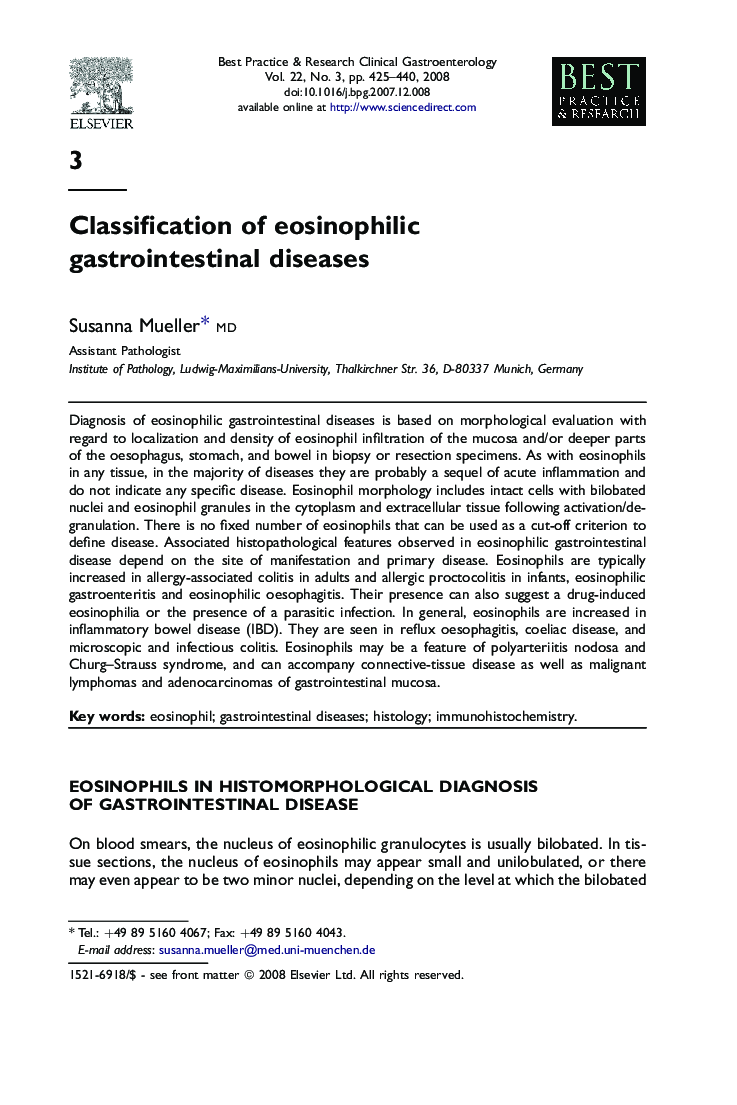| کد مقاله | کد نشریه | سال انتشار | مقاله انگلیسی | نسخه تمام متن |
|---|---|---|---|---|
| 3254793 | 1207241 | 2008 | 16 صفحه PDF | دانلود رایگان |

Diagnosis of eosinophilic gastrointestinal diseases is based on morphological evaluation with regard to localization and density of eosinophil infiltration of the mucosa and/or deeper parts of the oesophagus, stomach, and bowel in biopsy or resection specimens. As with eosinophils in any tissue, in the majority of diseases they are probably a sequel of acute inflammation and do not indicate any specific disease. Eosinophil morphology includes intact cells with bilobated nuclei and eosinophil granules in the cytoplasm and extracellular tissue following activation/degranulation. There is no fixed number of eosinophils that can be used as a cut-off criterion to define disease. Associated histopathological features observed in eosinophilic gastrointestinal disease depend on the site of manifestation and primary disease. Eosinophils are typically increased in allergy-associated colitis in adults and allergic proctocolitis in infants, eosinophilic gastroenteritis and eosinophilic oesophagitis. Their presence can also suggest a drug-induced eosinophilia or the presence of a parasitic infection. In general, eosinophils are increased in inflammatory bowel disease (IBD). They are seen in reflux oesophagitis, coeliac disease, and microscopic and infectious colitis. Eosinophils may be a feature of polyarteriitis nodosa and Churg–Strauss syndrome, and can accompany connective-tissue disease as well as malignant lymphomas and adenocarcinomas of gastrointestinal mucosa.
Journal: Best Practice & Research Clinical Gastroenterology - Volume 22, Issue 3, June 2008, Pages 425–440